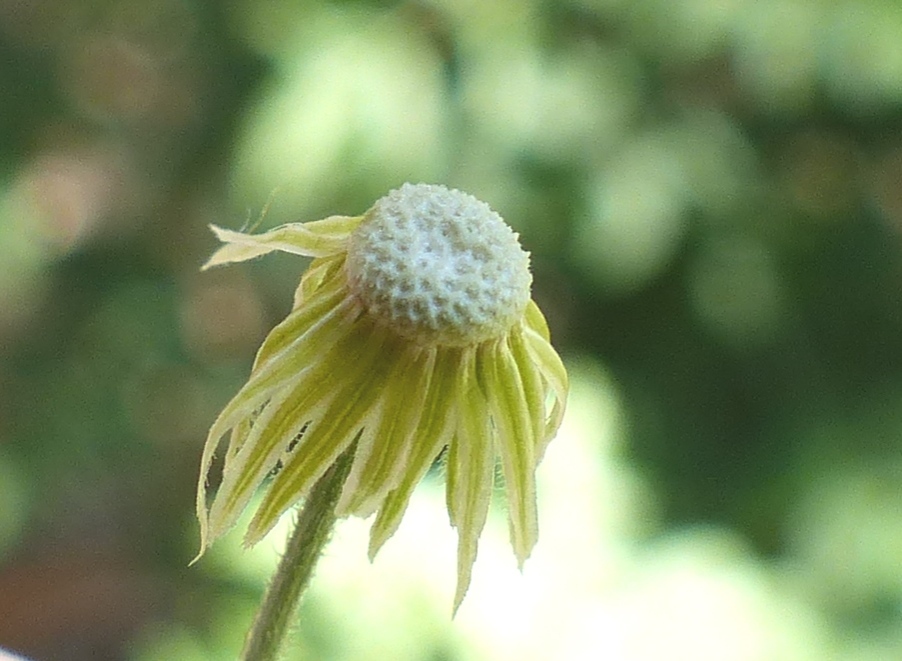Erigeron sumatrensis
Retz. Tall FleabanePale green or yellowish-green annual to c. 2 m high; stem striate, sometimes reddish towards the base, mostly unbranched between base and inflorescence, hispid to hirsute or pilose with coarse hairs. Leaves usually finely strigose to hispid; lower leaves elliptic to oblanceolate, 4–11(–15) cm long, 5–15(–35) mm wide, shallowly and distantly serrate in the upper part; upper leaves oblanceolate to narrow-elliptic or linear, 3–6 cm long, 2–10 mm wide, mostly entire. Capitula numerous in a pyramidal panicle; involucres campanulate, 4–5 mm long; bracts hispid, the inner brown on the inner face (margins pale) at maturity; receptacles 1.5–2(–2.5) mm diam., usually rough with irregularly raised margins of shallow pits. Outer florets with a minute irregularly toothed whitish or purplish limb. Cypselas elliptic-oblong, c. 1–1.4 mm long, c. 0.5 mm wide, pale brownish; pappus bristles straw-coloured, c. 4 mm long. Flowers mostly summer and autumn.
LoM, MuM, Wim, GleP, VVP, VRiv, MSB, RobP, MuF, GipP, OtP, WaP, Gold, CVU, GGr, DunT, NIS, EGL, EGU, WPro, HSF, HNF, OtR, Strz, MonT, HFE, VAlp. Also naturalised WA, SA, Qld, NSW, LHI, NI, ACT, Tas. Native to North America. A widespread weed of wasteland, cultivation and disturbed areas, common on roadsides.
Previously often confused with Erigeron bonariensis but usually readily distinguishable by the characters given in the key. Erigeron sumatrensis is usually a more robust plant, paler green in colour with broader leaves, and rougher receptacle. Stem leaves of E. bonariensis are often noticeably narrower and c. linear. However, occasional specimens are difficult to place in either species with confidence.
 Spinning
Spinning


